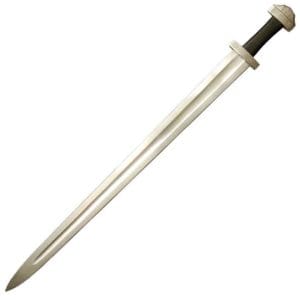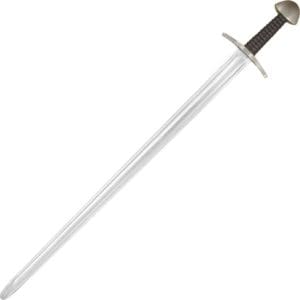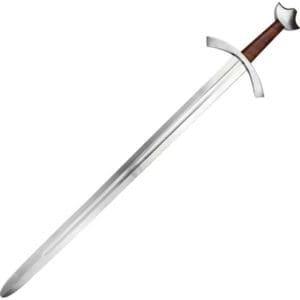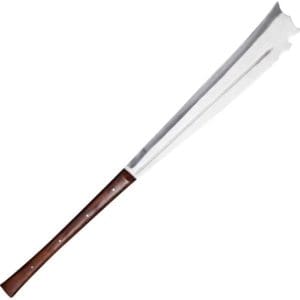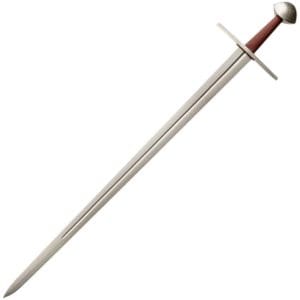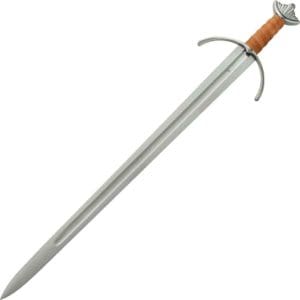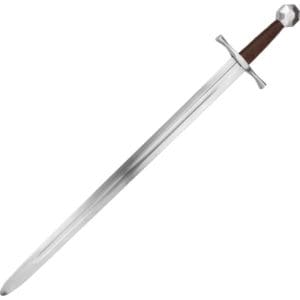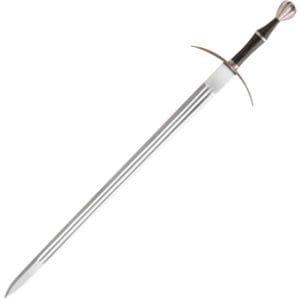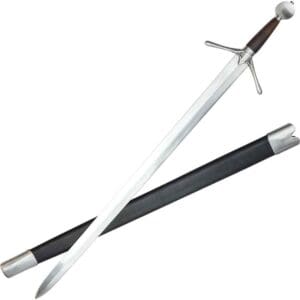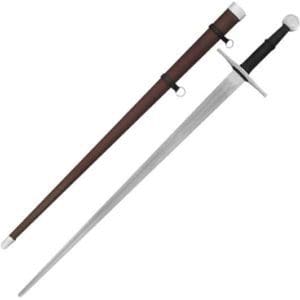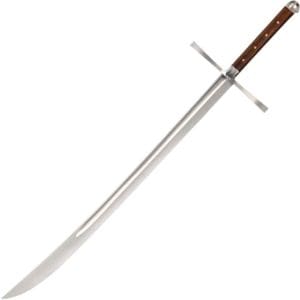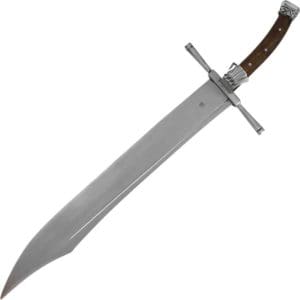Swords of the Middle Ages: A History
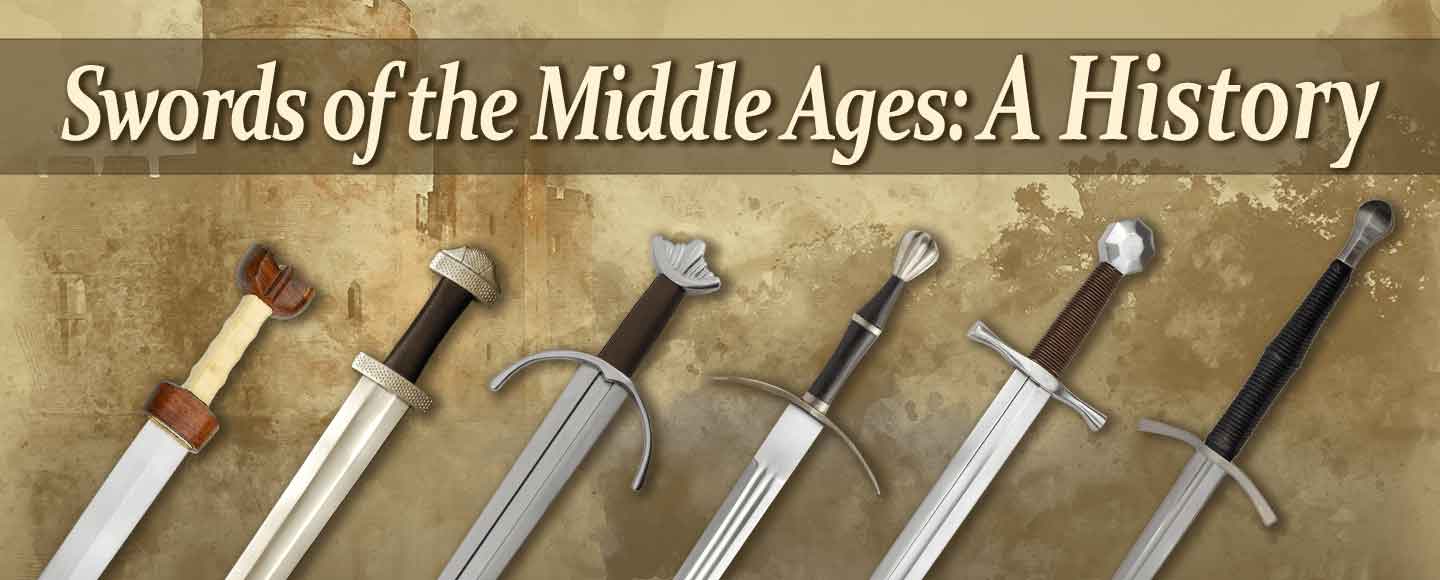
Have you ever wondered how European swords evolved from the time of the Romans to late-medieval mercenaries? In this post, we briefly cover a quick history of the different sword designs and styles of the Middle Ages.
Let’s begin with the most popular swords of the Romans. Their swords are important for context surrounding medieval swords. The legacy of their sword designs would heavily influence swords in the early medieval period.
What were the swords of the Romans?
A couple of the most popular Roman swords were the spatha and the gladius. More specifically, the gladius was in use from the 3rd century BC to the 3rd century AD. This sword usually has a straight, double-edged blade with a tapered tip. For its hilt, the crossguard is about the same width as the blade. It has a ball-shaped pommel. Next, the spatha would replace the gladius. It would usually have a fuller or two to help lighten the blade. Overall, it had a similar shape to the gladius. However, it would leave its legacy on the swords of the Vikings and Normans. Many of their swords are visible descendants of the spatha.
What did Viking swords look like?
For Viking swords, there are a few common themes in their design. Many if not most Viking swords will feature either a lobed pommel or a tea cozy-shaped pommel. A tea-cozy pommel may also be referred to as a mushroom-shaped pommel. In addition, a Viking sword will often have straight sides similar to the spatha. A popular manufacturer during the age of the Vikings was Ulfberht. This name was inscribed on many swords during the 9th, 10th, and 11th centuries. With the end of the 11th century, swords crossed over into the time of the Norman conquest and the early years of the High Middle Ages.

What happened to swords during the Norman Conquest?
Around the time of the Norman conquest, swords began getting crossguards. This change creates one of the most defining features of swords in the Middle Ages. According to Oakeshott typology, a way of categorizing swords by type, the most common sword type in the decades following the Norman Conquest was the XI type. This type was more suitable for fighting on horseback than on foot.
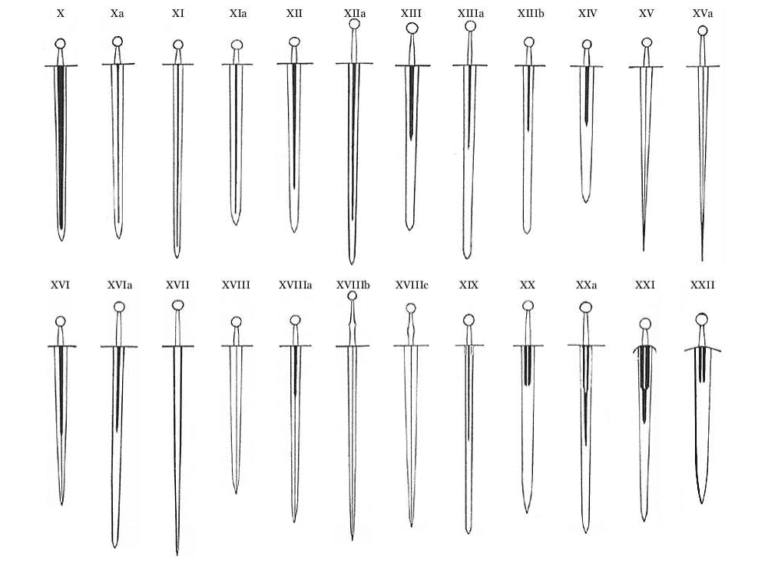
-
Tinker Pearce Sharpened 9th Century Viking Sword
SKU: SH2408Rated 0 out of 5$343.00$278.00 Add to Cart
What do Crusader swords look like?
Quickly following the Norman Conquest was the time frame of the Crusades. Indeed, there are only 30 years between these defining points in the Middle Ages. Overall, the Crusades would cover most of the High Middle Ages during the 12th and 13th centuries. Many of the swords during the Crusades had a cruciform crossguard hilt.
One of the most famous swords to come out of the 12th century was the Cawood Sword. We offer a replica version of this sword from Hanwei. It is a Type XII sword, which was a typical design for the High Middle Ages. The Sword of Saint Maurice kept in Turin is another version of this sword type. Meanwhile, the 13th century would see the beginning of the single-edged sword known as a falchion.
Another popular design for the Crusades was the Type XIII or knightly swords. It was developed during this period and features heavily in the archaeological record. It often has a long, wide blade with parallel edges. We offer a wide range of knightly swords. The knightly sword would last for a few centuries before transitioning into the arming sword of the later medieval period.
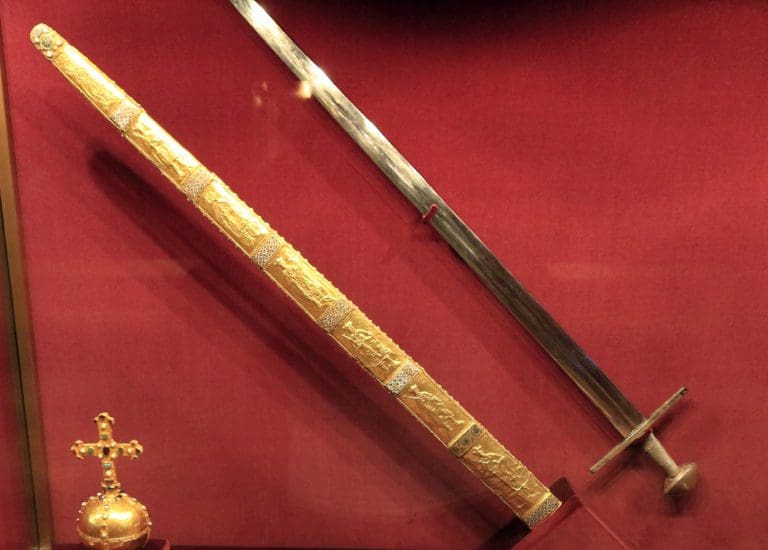
What kind of swords existed in the late Middle Ages?
As Europe headed into the late Middle Ages in the 14th and 15th centuries, certain sword styles became more and more popular. Many swords became longer to counteract the polearms and heavy plate armour that were becoming increasingly common on the battlefield. The Hundred Years War and the Wars of the Roses spanned much of the change and featured many of the popular types of late medieval swords.
The bastard sword was a late medieval sword, showcasing the transition towards longer weapons. It had a length that was between an arming sword and a longsword. Bastard swords were very similar to hand-and-a-half swords. Hand-and-a-half swords were exactly what they sound like; they had a hilt that was long enough to fit one hand along with part of the other hand on the grip. Often, the other hand would rest on the pommel to fit. These swords would also have longer blades.
The arming sword was another late medieval sword that was highly popular. It was a descendant of the knightly sword and often looked similar in design. This type of sword has gotten its name from its common use at the time as a side-arm rather than as a main weapon.
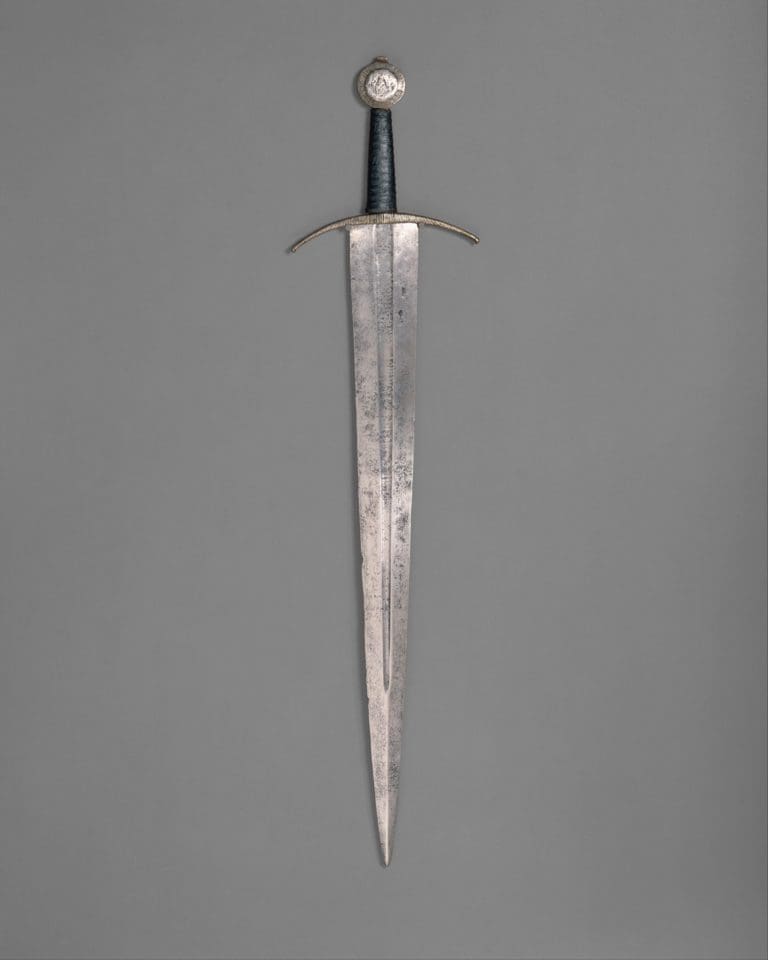
What were Messer Swords?
Of course, when discussing the history of swords in the Late Middle Ages, the Messer-sword style should definitely be mentioned. Messers as a whole were featured heavily in 14th and 15th century sword-fighting manuals. They were long, single-edged swords. Their name literally translates to knife, and they often have the same style of hilt construction as one. The Kriegsmesser was a one- or two-handed variation that was commonly used by late medieval mercenaries, especially the Landsknecht. The Landsknecht would also wield other swords such as the Zweihander and the katzbalger. Great swords, like the katzbalger, cover the transition from the late medieval period into the Renaissance.
While we cover many medieval swords, one popular sword style that is purposely not listed chronologically in the timeline above is the flamberge. The reason is that while it is commonly used to refer to late-medieval flame-bladed swords, it actually has multiple connotations. At one point, it was a term that referred to swords in transition from rapiers to short swords. The term could also refer to a large sword in general. Thus, while we use this term on our site to showcase our flame-bladed swords, it would not historically have referred to only this type of sword.
Summary
We have covered a quick history of the swords of the Middle Ages. From the Romans to the late-medieval period, swords changed greatly in their style across the centuries. We offer many decorative and functional swords that are wonderful examples of the sword types mentioned above as well as many others in case you are interested in getting one for yourself.
Image Sources:
10th century Frankish sword: formerly part of Galopin collection – Creative Commons
Oakeshott Sword Types – Public Domain
Sword of Saint Maurice: Also known as the Imperial Sword from the 12th century – Creative Commons
Arming Sword: 1400s sword held at the MET – Public Domain

